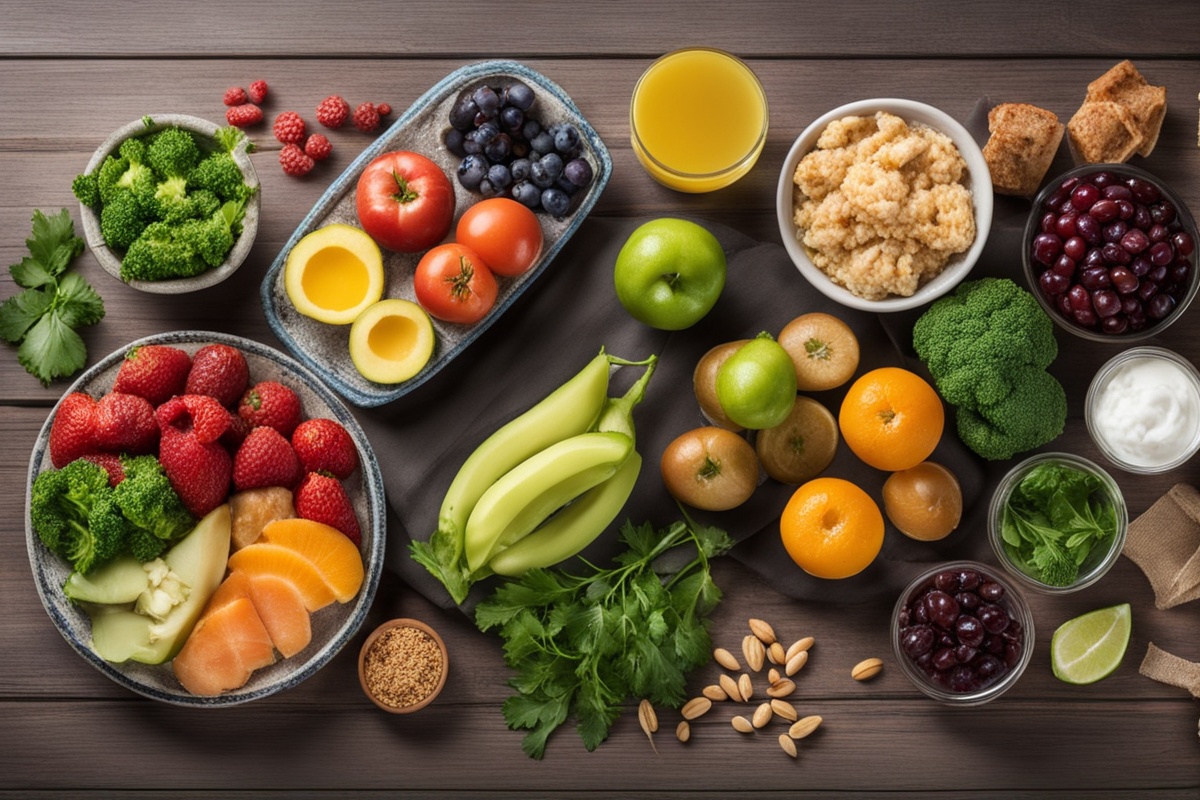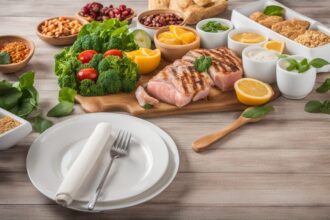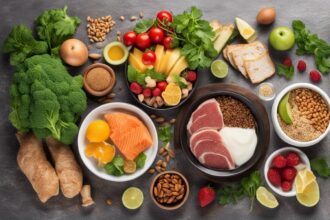Hey there, fellow health enthusiasts! If you’re diving into the world of fasting or looking to refine your approach, you’ve come to the right place. Fasting isn’t just a trend—it’s a lifestyle choice backed by science for its potential benefits like improved metabolic health and mental clarity. But let’s be real: figuring out what to eat before and after a fast can be a bit of a puzzle. That’s why I’ve put together this comprehensive fasting guide packed with meal ideas, practical tips, and a sprinkle of scientific insight to help you navigate your fasting journey with confidence. Whether you’re practicing intermittent fasting, time-restricted eating, or a longer fast, this post will equip you with the tools to fuel your body right. Let’s get started!
What Is Fasting and Why Does It Matter?
Fasting, at its core, is the voluntary abstinence from food and sometimes drink for a specific period. It’s been practiced for centuries across cultures for spiritual, religious, and health reasons. Today, it’s gaining traction for its potential to support weight management, enhance autophagy (cellular cleanup), and improve insulin sensitivity (Mattson et al., 2017). But here’s the catch: fasting isn’t just about skipping meals. It’s about timing and nourishing your body strategically with a solid fasting guide to maximize benefits and minimize pitfalls like hunger pangs or nutrient deficiencies. Understanding how to break a fast or prepare for one with the right foods can make all the difference in sustaining energy and avoiding the dreaded “hangry” mode.
Pre-Fast Meals: Setting the Foundation
Before you embark on a fast, what you eat matters—a lot. The goal is to load up on nutrient-dense foods that provide sustained energy and keep cravings at bay. Think of your pre-fast meal as the fuel that’ll carry you through those fasting hours. According to research, meals high in fiber, healthy fats, and protein can help stabilize blood sugar levels and reduce hunger during fasting periods (Tinsley & La Bounty, 2015). So, let’s break down some practical meal ideas to include in your fasting plan for a smooth start.
- Overnight Oats with Nuts and Berries: Combine rolled oats with almond milk, a spoonful of chia seeds, a handful of walnuts, and fresh blueberries. This meal is rich in fiber and antioxidants, keeping you full longer.
- Avocado Toast with Eggs: Spread mashed avocado on whole-grain toast and top with a poached egg. The healthy fats from avocado and protein from eggs offer a balanced energy source.
- Greek Yogurt Parfait: Layer Greek yogurt with granola and mixed fruits like kiwi and strawberries. It’s a protein-packed option that’s easy to digest before a fast.
- Quinoa Veggie Bowl: Mix cooked quinoa with steamed broccoli, spinach, and a drizzle of olive oil. This provides complex carbs and micronutrients for sustained energy.
Pro tip: Avoid sugary or processed foods before fasting—they can spike your blood sugar and leave you crashing mid-fast. Hydration is also key, so sip on water or herbal tea leading up to your fasting window.
Breaking the Fast: What to Eat for Optimal Recovery
Breaking a fast is just as crucial as preparing for one. After hours (or days) without food, your digestive system needs gentle reintroduction to nutrients. Studies suggest that starting with easily digestible foods can prevent gastrointestinal distress and support nutrient absorption (Johnstone, 2015). This part of your fasting guide focuses on meals that replenish without overwhelming your body. The rule of thumb? Start small, prioritize hydration, and focus on whole foods.
- Bone Broth or Vegetable Soup: A warm bowl of bone broth or a light veggie soup with carrots and zucchini is hydrating and rich in electrolytes like sodium and potassium.
- Banana with Almond Butter: A small banana paired with a teaspoon of almond butter offers quick-digesting carbs and a touch of fat to ease your system back into eating.
- Scrambled Eggs with Spinach: Lightly scramble eggs with a handful of spinach for a protein-rich, low-impact meal that’s gentle on the stomach.
- Rice Porridge with Coconut Milk: Cook white rice with a splash of coconut milk for a soothing, carb-rich option that’s easy to digest after longer fasts.
Remember, portion control is vital when breaking a fast. Overeating right away can lead to bloating or discomfort, so take it slow and listen to your body’s cues. Also, incorporating a fasting meal plan that gradually ramps up calorie intake over a few hours can help.
Nutritional Considerations During Fasting Windows
While you’re not eating during your fasting window, it’s still worth thinking about hydration and electrolyte balance, especially for longer fasts. Dehydration can sneak up on you, leading to fatigue or headaches, which is why water, herbal teas, and even black coffee (in moderation) are often recommended in any intermittent fasting guide (Horne et al., 2015). Some folks also add a pinch of Himalayan salt to their water for sodium balance, but don’t overdo it—too much can mess with your blood pressure. If you’re doing a prolonged fast (over 24 hours), consult a healthcare provider to ensure you’re not at risk for nutrient imbalances. The goal is to support your body, not stress it out!
Meal Ideas for Different Fasting Protocols
fasting diet guide to popular fasting methods with tailored meal ideas.
For 16:8, focus on two or three nutrient-dense meals in your eating window. A late breakfast could be a veggie omelet with whole-grain toast, followed by a lunch of grilled chicken salad with quinoa, and a light dinner of baked salmon with steamed asparagus. For 5:2, on low-calorie days (around 500–600 calories), stick to small, high-protein meals like a turkey wrap with lettuce and a side of cucumber slices. The idea is to keep meals balanced and satisfying within the constraints of your chosen fasting schedule.
Common Mistakes to Avoid with Fasting Meals
Even with the best fasting guide, it’s easy to slip into habits that undermine your efforts. One major misstep is overcompensating during eating windows by bingeing on junk food—fasting isn’t a free pass to eat whatever you want! Studies warn that poor food choices post-fast can negate benefits like improved insulin sensitivity (Anton et al., 2018). Another mistake is neglecting hydration, which can lead to sluggishness or even dizziness. Lastly, don’t ignore your body’s signals. If you feel weak or overly fatigued, it might be time to adjust your fasting duration or meal composition. Fasting should feel sustainable, not punishing. Keep tweaking your fasting tips until you find what works for you.
As we wrap up this ultimate fasting guide, I hope you’re feeling inspired to experiment with these meal ideas and strategies. Fasting can be a powerful tool for health when done thoughtfully, with attention to nutrition and personal needs. Remember, it’s not a one-size-fits-all approach—play around with pre-fast and post-fast meals, stay hydrated, and prioritize whole foods to support your journey. Whether you’re a newbie or a seasoned faster, building a solid fasting routine takes patience and practice. Got a favorite fasting meal or tip? Drop it in the comments—I’d love to hear how you’re making fasting work for you. Here’s to healthier, more mindful eating!
References
- Anton, S. D., Moehl, K., Donahoo, W. T., Marosi, K., Lee, S. A., Mainous, A. G., … & Mattson, M. P. (2018). Flipping the metabolic switch: Understanding and applying the health benefits of fasting. Obesity, 26(2), 254-268.
- Horne, B. D., Muhlestein, J. B., & Anderson, J. L. (2015). Health effects of intermittent fasting: Hormesis or harm? A systematic review. The American Journal of Clinical Nutrition, 102(2), 464-470.
- Johnstone, A. (2015). Fasting for weight loss: An effective strategy or latest dieting trend? International Journal of Obesity, 39(5), 727-733.
- Longo, V. D., & Mattson, M. P. (2020). Fasting: Molecular mechanisms and clinical applications. Nature Reviews Endocrinology, 16(4), 181-192.
- Mattson, M. P., Longo, V. D., & Harvie, M. (2017). Impact of intermittent fasting on health and disease processes. Ageing Research Reviews, 39, 46-58.
- Tinsley, G. M., & La Bounty, P. M. (2015). Effects of intermittent fasting on body composition and clinical health markers in humans. Nutrition Reviews, 73(10), 661-674.






